This was published 6 years ago
How a tiny island nation become the biggest empire in the world
By Steve McKenna
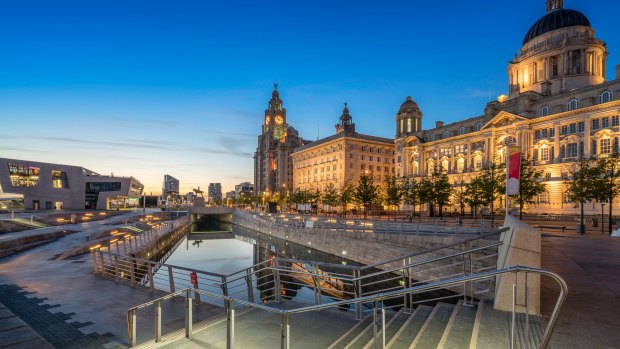
The Liver building next to the Port Authority and the Cunard Building on Pier Head, Liverpool.
Britain's shock foray into "Brexitland" may have been driven by voters' concerns about immigration and their antipathy – or ambivalence – to the European Union. But the referendum result can, in part, be explained by a nostalgia for the days when Britannia ruled the waves (free from the shackles of the bureaucrats of Brussels).
It was the country's epic seafaring endeavours, helmed by iconic figures such as Captain Cook, Admiral Lord Nelson and Sir Francis Drake, that helped put the "great" into Great Britain, transforming it from a tiny island nation to the biggest empire the world has ever seen.
To embrace Blighty's enduring maritime spirit, and to discover just how much it has shaped the country's culture and character, check out the nautical-themed museums, visitor attractions and watering holes of these historic ports.
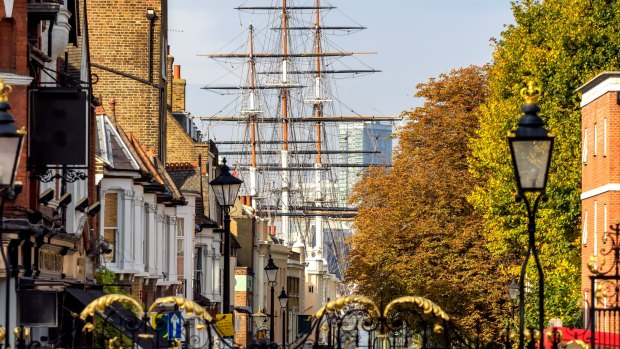
Greenwich Village, London.
GREENWICH
A UNESCO World Heritage listing has been bestowed on this lovely London village thanks to its hoard of maritime treasures. Fittingly, the best way to arrive is by boat (take the Thames Clipper river bus – thamesclippers.com – from central London and you'll dock by the bewitching Old Royal Naval College).
The biggest draw in these opulent twin-domed buildings designed by Sir Christopher Wren is the plush Painted Hall, which has been dubbed "Britain's Sistine Chapel" thanks to its elaborate naval-flavoured ceiling murals. Nelson's body was laid in state here after his death at the 1805 Battle of Trafalgar, while his bullet-torn jacket is among the exhibits at the National Maritime Museum, a short walk away by hilly Greenwich Park. Another unmissable Greenwich attraction is Cutty Sark.
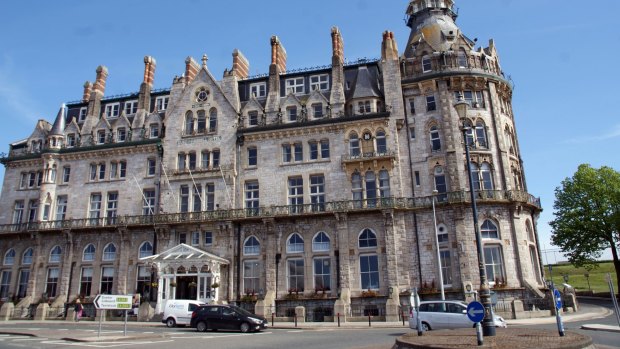
Duke of Cornwall hotel.Credit: Steve McKenna
Used for exporting tea from China and wool from Australia, this sleek mid-19th century sailing vessel was badly damaged by fire in 2008, but looks fabulous after a £50 million ($88 million) refurbishment. Afterwards, have a pint in the charming, Thames-side Cutty Sark pub, whose walls are decorated with ship sketches and paintings (cuttysarkse10.co.uk). London's roots as an international port – which date to Roman times – are explored at the excellent Museum of Docklands on the Isle of Dogs (which apparently got its name because Henry VIII kept his hunting dogs there). Take the DLR (Docklands Light Railway) from Cutty Sark station to West India Quay. www.visitgreenwich.org.uk
PORTSMOUTH
Britain's only island city – it's connected to the "mainland" by bridge – Portsmouth is the principal port of the Royal Navy. It's billed as "The Great Waterfront City" by tourism chiefs – but most Portsmouthians refer to it by its nickname, "Pompey". Edging the Solent, a portal into the English Channel (said to be Europe's busiest waterway), Portsmouth Historic Dockyard shelters an array of nautical gems.
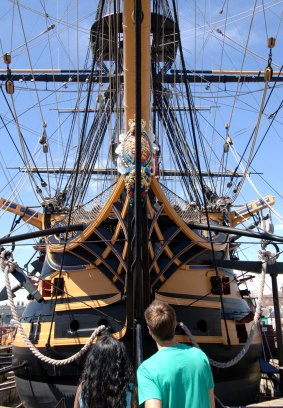
Lord Nelson's warship HMS Victory, famous for her role in the Battle of Trafalgar, in dry dock in Portsmouth.
The boat-shaped Mary Rose Museum is a real crowd-puller, hosting what was Henry VIII's flagship, which sunk in the Solent during a face-off with the French in 1545. After 437 years underwater, the vessel's remains were dredged up and, following a massive restoration, its ghostly half-hull is on display alongside Tudor artefacts recovered from the seabed.
Dockyard visitors can also roam HMS Warrior (the world's first-ever iron-hulled warship) and HMS Victory (on which Nelson died), as well as rubbing shoulders with serving sailors (this is still a working naval base). Portsmouth has some fine old harbourside pubs (check out Still & West on Spice Island), the 170-metre Spinnaker Tower (which offers entrancing views over the Solent) and a few notable Australian links: the First Fleet sailed from Portsmouth, as did HMS Investigator, commanded by Matthew Flinders, on his quest to circumnavigate what was then Terra Australis (Australia). www.visitportsmouth.co.uk
See also: A key piece of British history sits inside Portsmouth's 'UFO'
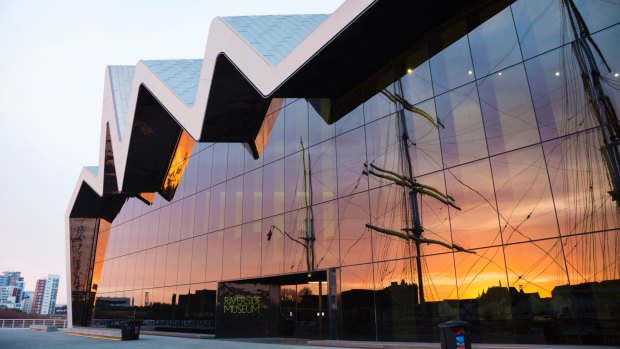
The Riverside Museum in Glasgow. Reflected in the glass facade are the masts of the Victorian tall ship Glenlee.Credit: Martin McCarthy
SOUTHAMPTON
Portsmouth's south-coast neighbour has its own proud seafaring heritage.
The armies of King Henry V had marched through Bargate – one of Southampton's remaining medieval city gates – before crossing the Channel for the Battle of Agincourt. The most famous departure, however, came in 1912, when the Titanic – built in Belfast's Harland and Wolff shipyard – embarked on its maiden voyage from berth 44 at Southampton's docks.
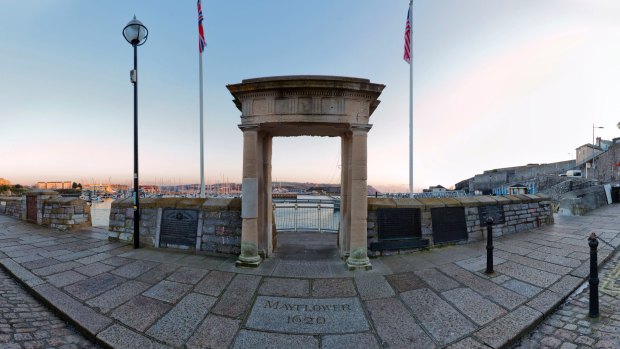
Looking out from Pilgrims Point, above the Mayflower Steps Barbican, Plymouth.
Titanic memorials dot this park-freckled city, while the ship's demise, and its effect on Southampton, is charted in the slick, interactive SeaCity Museum, which was unveiled on the centenary of the tragedy. Learn more about Titanic – and see parts of old Southampton where its crew lived, worked and drank – on absorbing, anecdote-filled walking tours (southamptontouristguides.com). Have a drink at The Grapes on Oxford Street (where some of the Titanic crew were mingling before the ship's departure, lost track of time and missed that fateful journey). Inextricably linked with the doomed liner, Southampton has nevertheless become Britain's busiest cruise port, thanks to its natural deep-water harbour and unique double tide (which results in unusually prolonged periods of high water). Ships that would have dwarfed the Titanic now regularly call in here. www.discoversouthampton.co.uk
LIVERPOOL
Liverpool was one of the British empire's richest ports and maritime diversions pepper its revitalised UNESCO World Heritage waterfront. Part of a cluster of renovated Victorian warehouses on Albert Dock, the Merseyside Maritime Museum is the standout. It traces the city's past as a buzzing hub of world trade and emigration (more than 9 million people set sail from Liverpool for the Americas and Australasia).
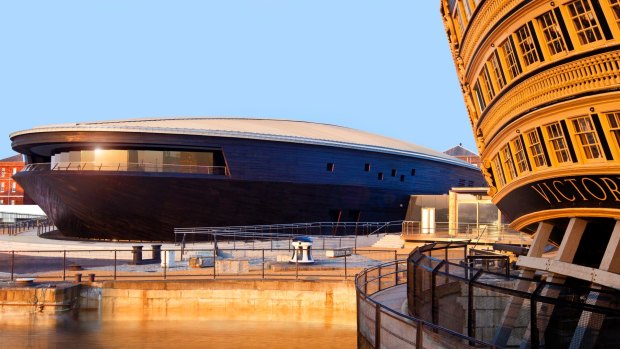
Mary Rose.
You'll also find exhibitions on Lusitania (which, on a 1915 transatlantic voyage from Liverpool to New York, was torpedoed and sunk by a German U-boat). Also in the museum, browse posters advertising the golden age of ocean cruising, and discover things you never knew about Titanic, a ship that carried Liverpool's name on its stern. Titanic's operator, White Star Lane, was founded in the city in 1845, and its former offices have been converted into a five-star Titanic-themed hotel, 30 St James Street (rmstitanichotel.co.uk). It has a lavish rooftop champagne bar and restaurant named in honour of RMS Carpathia that helped save 705 lives from the sinking vessel.
Carpathia was owned by Cunard, which merged with White Star in 1934, and last year celebrated its 175th birthday with a spectacular "river dance" on the River Mersey featuring its three giant Queens (Victoria, Elizabeth and Mary 2, which, incidentally, has recently had a £90-million refit). Another must-do in Liverpool is to ride the Mersey ferry. On the journey across the river and back, you'll glean unbeatable views of the Three Graces (The Royal Liver Building, The Cunard Building and the Port of Liverpool Building) – the skyscraping symbols of Liverpool's glory years. www.visitliverpool.com
See also: 20 reasons to visit Liverpool
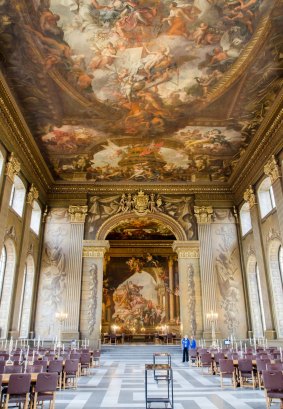
Greenwich University: Interior of Painted Hall in King William Court.
PLYMOUTH
Nudging the Sound (a natural bay on the English Channel, which blends into the Atlantic) and fringed by the Tamar, a river that divides Devon and Cornwall, Plymouth is touted as "Britain's Ocean City".
To best appreciate its delightful waterfront setting, join one of the dockyard boat tours (plymouthboattrips.co.uk) that depart from the Mayflower Steps (near to which, in 1620, the Pilgrims set sail for the New World). The captain – in his broad Devon accent – will point out momentous Plymouth landmarks, such as the art deco harbourside lido and The Hoe, a hilltop park with a red-and-white striped lighthouse and a statue of Francis Drake, the intrepid explorer and hero.
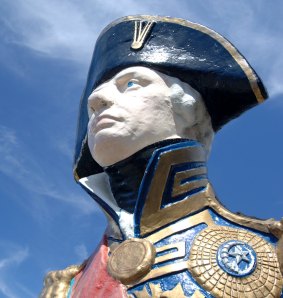
Ship figurehead of Lord Nelson at Portsmouth Historic Dockyard.
Legend has it that Drake played bowls on The Hoe before confronting the Spanish Armada in 1588. After passing Drake's Island (where military fortifications have fallen into disrepair and plans are afoot for a luxury hotel and spa), the boat crawls past Devonport, the largest naval base in western Europe. Opened in 1691, the base stores Britain's amphibious ships, survey vessels and half her frigates.
Its Heritage Naval Centre runs guided tours of its maritime galleries and HMS Courageous, a decommissioned nuclear submarine (devonportnhc.wordpress.com). Like many British port cities, Plymouth was devastated by the Blitz and its centre is a hotchpotch of architecture (the good, the bad and the ugly). A few picturesque old buildings remain, though, notably The Duke of Cornwall, a grand dame of a hotel dating to 1863. Scores of famous faces have bedded down here, including Ernest Shackleton, the night before his groundbreaking expedition left Plymouth, bound for Antarctica; www.visitplymouth.co.uk
FIVE OTHER BRITISH CITIES WITH A RICH MARITIME HERITAGE
1. BRISTOL
Robert Louis Stevenson's Treasure Island begins in Bristol and you'll find plenty of pirate-led, shiver-me-timbers-type tours here. M Shed museum tells the history of this vibrant port city. It overlooks Bristol Floating Harbour, where you'll find SS Great Britain – Isambard Kingdom Brunel's awesome iron steamship, which carried thousands of people Down Under (including the first England cricket team to tour Australia). www.visitbristol.co.uk
2. GLASGOW
Moored in Edinburgh's port of Leith, the former Royal Yacht Britannia is just one of the great vessels constructed in the shipyards of the River Clyde, which flows through Glasgow to the Irish Sea. The three-masted SV Glenlee Tall Ship, launched in 1896, is berthed beside Glasgow's superb Riverside Museum, whose collection includes model-sized Clyde-built ships. www.peoplemakeglasgow.com
3. FALMOUTH
The Cornish coast is indented with smugglers' coves, shipwreck sites and photogenic harbour towns. Its seafaring heritage is explored in Falmouth's award-winning Maritime Museum Cornwall. There are international elements, too. Running until 2017, a new exhibition pays homage to the Vikings' nautical prowess. www.visitcornwall.com
4. HULL
Once a key trading port of the Hanseatic League – a powerful medieval trading bloc that stretched across northern Europe's seas – Hull will be the 2017 UK City of Culture. Its whaling, fishing and merchant history is charted in the city's Maritime Museum. Further up the Yorkshire coast in Whitby, the Captain Cook Memorial Museum occupies the property in which Australia's "discoverer" lodged as an apprentice sailor; www.yorkshire.com
5. CARDIFF
The Welsh capital blossomed in the early 20th century when it was the world's largest coal exporting port, and the launch pad for Captain Scott's fateful trip to the South Pole in his ship, Terra Nova. The Cardiff Story Museum traces the city's boom and bust years, while jazzed-up Cardiff Bay is full of eye-catching waterfront architecture. www.visitcardiff.com
See also: 20 things that will shock first-time visitors to the UK
See also: It's really happening - how Brexit will affect travellers to the UK
TRIP NOTES
MORE
STAY
Rooms at the Innkeeper's Lodge, at the Mitre, an 18th-century coaching inn in Greenwich, start from £79 ($156); innkeeperslodge.com/london-greenwich
In Old Portsmouth, Fortitude Cottage is a quaint B&B, with contemporary trimmings. Rooms priced from £110; fortitudecottage.co.uk
Embedded in Southampton's medieval city walls, close to the cruise terminal, the stylish Pig in the Wall has rooms from £130; thepighotel.com/in-the-wall
Not to be confused with 30 James Street hotel, the industrial-chic, Titanic-themed Titanic Hotel is housed in a former warehouse on Liverpool's Stanley Dock. Rooms from £99; titanichotelliverpool.com
The Duke of Cornwall hotel in Plymouth has rooms from £70. For a treat, request the lofty Panoramic Tower Room, which sports a modern boutique feel and 360-degree city views. A butler can bring you afternoon tea up here; thedukeofcornwall.co.uk
Steve McKenna was a guest of Visit Britain and partners.
Sign up for the Traveller Deals newsletter
Get exclusive travel deals delivered straight to your inbox. Sign up now.